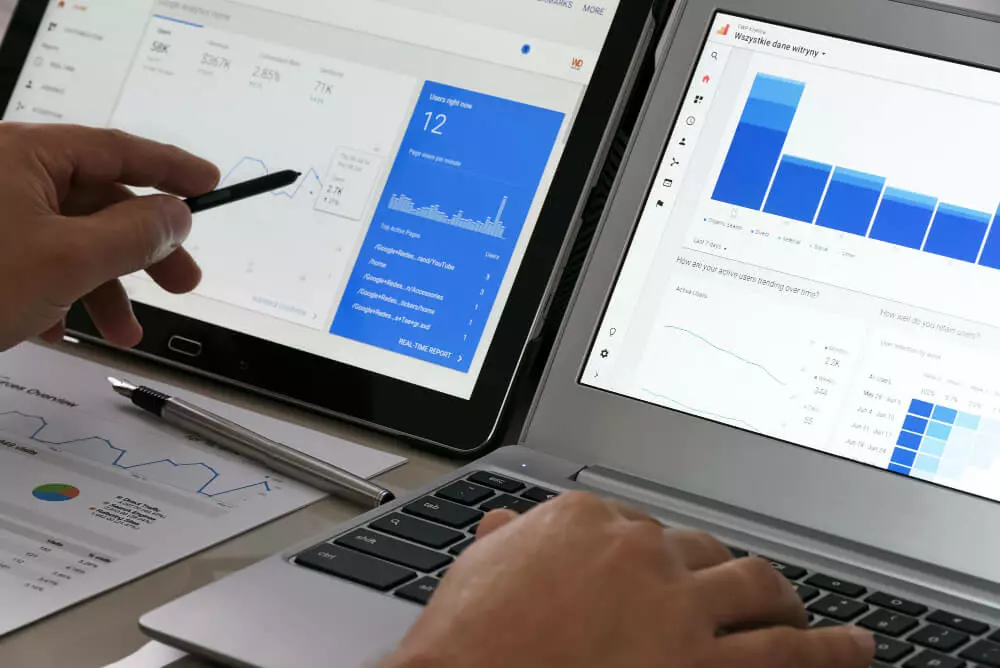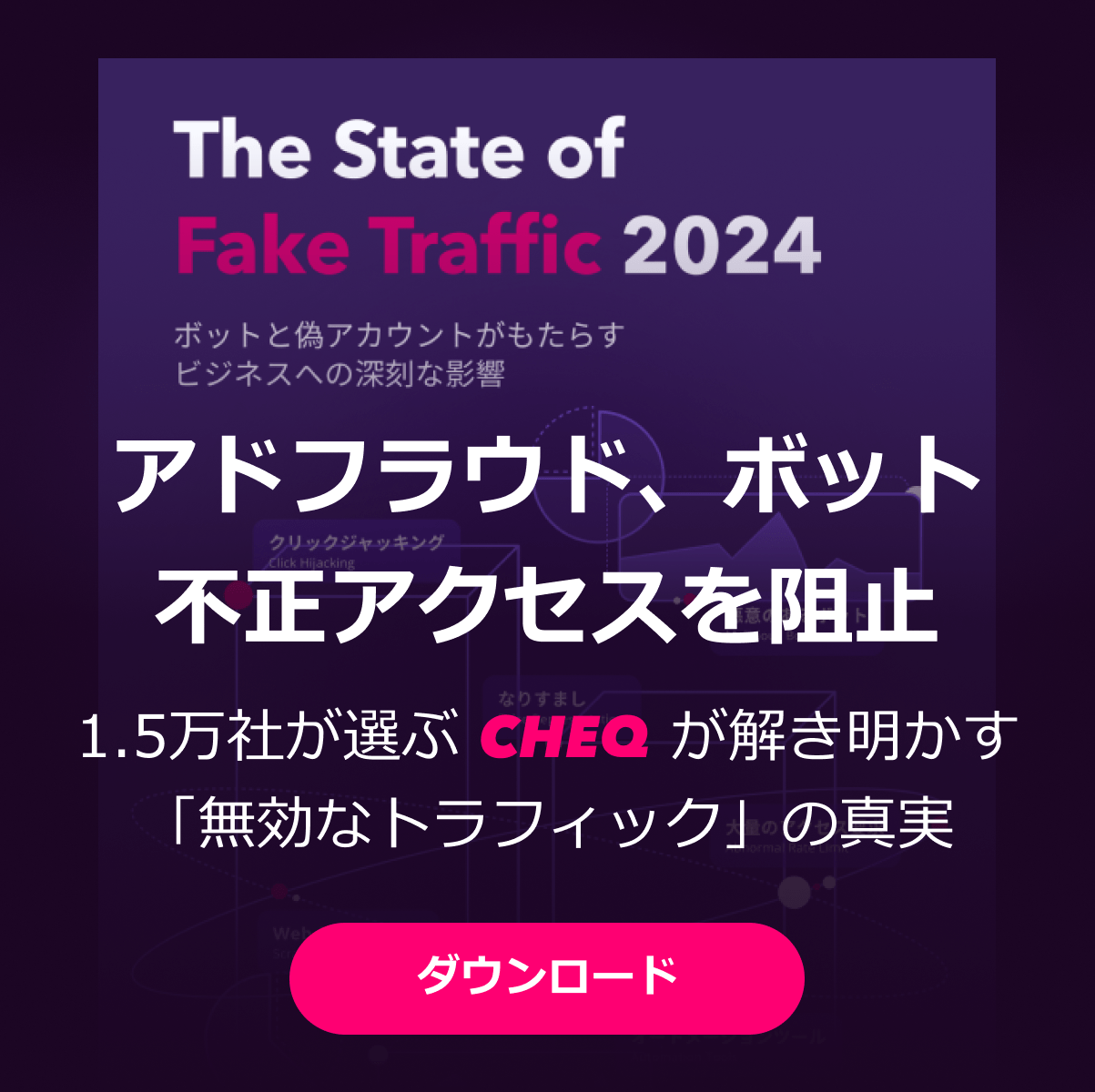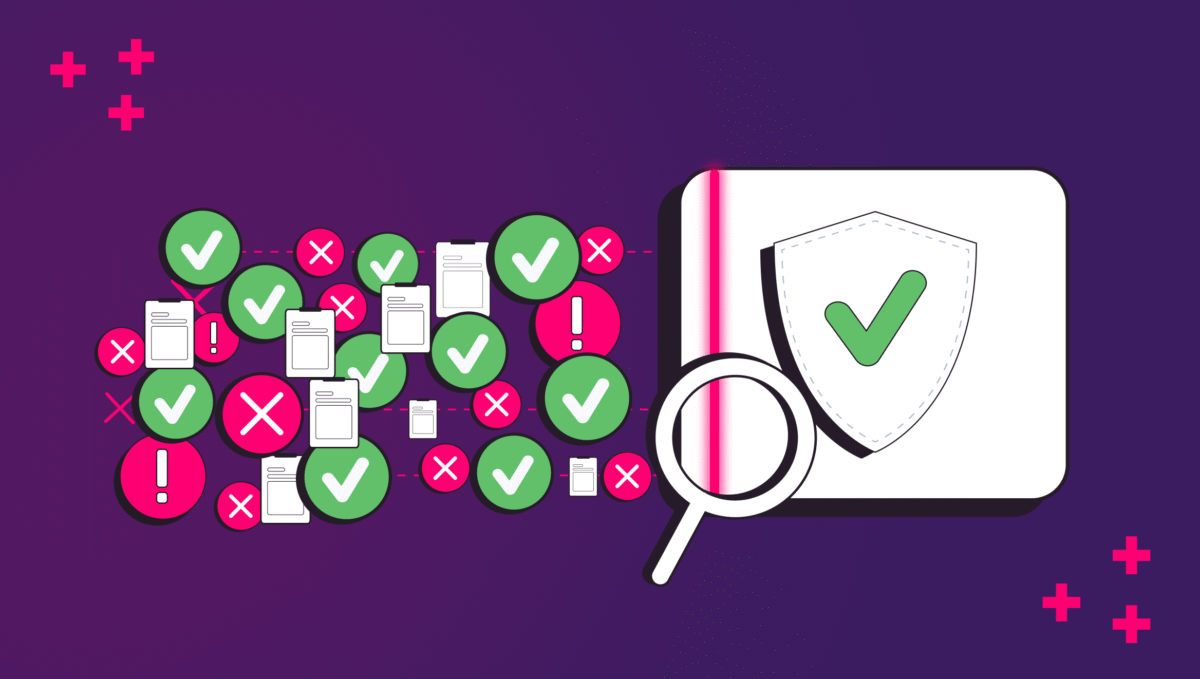What is Invalid Traffic (IVT)?
Oli Lynch
|Cyber Risks & Threats | August 21, 2022

In search marketing, you’ve probably seen the term invalid traffic (IVT) around and dismissed it as an inevitability. Perhaps you’ve even claimed some money back from Google or Bing for invalid clicks on your campaigns.
After all, they do issue automatic refunds for invalid traffic. Don’t they?
And actually, once you get down to the details, what is invalid traffic? And is there anything you can do about it?
The definition of invalid traffic (IVT)
Invalid traffic is a catch-all term that refers to any non-genuine click activity on a paid link. Some of these clicks can be intentional and fraudulent, and others might be genuine accidents or caused by poor ad placement or pop-ups.
According to Google:
Invalid traffic is any activity that doesn’t come from a real user with genuine interest. It can include accidental clicks caused by intrusive ad implementations, fraudulent clicking by competing advertisers, advertising botnets and more.
Although this is an accurate description, there is more to unpack behind that ‘and more’.
It’s worth bearing in mind also that there are different levels of invalid traffic. Certain types of bot traffic and malware clicks generate a very sophisticated form of invalid traffic, often hiding behind VPNs or mimicking human behaviour.
And although blocking bad traffic based on IP addresses can prevent some casual click fraud, understanding who or what is clicking your ads can change how you see invalid traffic on your digital ads.
What causes invalid traffic on my ads?
If we dig deeper into the definition of invalid traffic, there are numerous common themes, such as:
- Paid clicks from click farms or paid-to-click (PTC) sites
- Clicks from fraudulent placings, such as ad stacking
- Spam clicks from an app or browser malware
- Multiple clicks from the same source
- Organized fraudulent traffic such as bot clicks (Watch the video below for more information about bot traffic).
Click farms and paid-to-click sites
A click farm is a location that sells website traffic for a variety of purposes. This might be to inflate social media engagement, increase website traffic statistics, or even click on a rival’s paid ad campaigns. Increasingly, the click farm model has switched to PTC (or paid-to-click) sites, which are apps and websites offering users a remote income to click or view ads. In short, your ad might be being viewed by people who are paid a few cents to click but with zero chance of converting.
Fraudulent ad placements
Hiding and stacking ads is another way that invalid traffic can be routed to your paid campaigns. Techniques such as ad stacking are used to place one ad on top of another, earning the fraudulent publisher multiple payouts even though only one ad was viewed by the site visitor. Ads can also be hidden inside un-viewable iframes or even viewed when no human eyes are present…
Malware clicks
Software such as apps or browser extensions can often contain malware, which is software designed to carry out fraudulent activity. In the case of invalid traffic clicks, this means the app can take a genuine human click and route it to hidden ads or even claim credit for later downloads or online purchases, a practice known as organics poaching. Malware clicks are often a sophisticated invalid traffic source, hiding their true activity behind genuine human activity.
Multiple clicks
A high volume of clicks from the same source will often indicate an organized click fraud campaign. This may be a click farm, but it could also be competitors clicking your ads or even those malware clicks I mentioned above. This is a red flag for invalid traffic in your Google Analytics, so keep an eye on those ad clicks.
Ad fraud
A popular form of cyber crime, ad fraud, is when a payout is either collected on ads that have either been heavily inflated or never even viewed. Fraudulent website owners can perform ad fraud by hosting ads and then purchasing traffic to boost the views or clicks. This is usually bot traffic, meaning zero conversions for you…
Accidental clicks
Although practices related to click fraud and ad fraud are included in the term invalid traffic, it can also simply refer to people clicking on links accidentally. If you’ve ever clicked on a link while scrolling through a news feed, only to close it the moment it starts to load, well… That’s an invalid click.
The cost of invalid clicks
By definition, any clicks from these sources are invalid traffic, meaning that you shouldn’t have to pay for them – according to the ad platforms.
If you’re using pay-per-click (PPC), such as Google Ads or Facebook Ads, each click can be quite costly. If you’re paying a few cents per click, you might dismiss invalid traffic as collateral damage in your marketing budget.
But if you’re bidding on keywords that have a higher dollar value, you might be more interested to know exactly how much invalid traffic there is out there and how much it’s costing you.
Another factor to consider is that invalid clicks don’t just cost you money; they also reduce your potential for exposure to a genuine lead. If you’re an SME or digital marketing agency handling a limited budget, losing clicks to non-genuine actors can affect your KPIs and skew that return on investment.

How much internet traffic is invalid clicks?
Data suggests that over half of all online traffic is automated, coming from web scrapers and other bots.
But when it comes to paid search links, not all the invalid traffic is necessarily automated. As we’ve seen above, plenty of invalid traffic comes from sources such as vindictive business rivals, brand haters, or websites with poor ad placement.
Based on our own data here at CHEQ, we’ve found that, as of 2020, the average rate of fraudulent clicks or invalid clicks is around 14%.
However, this is just the average, with some industries seeing over 70% invalid clicks on their PPC ads.
Photographers, locksmiths, and plumbers are just a few of the industries seeing these dizzyingly high rates of fake clicks on their ads.
And when it comes to industries such as law, finance, and e-commerce, the levels of IVT are still up around the 30% mark.
In fact, the majority of all paid search ad campaigns, around 90%, are affected in some capacity by invalid clicks and invalid traffic.
Read our research into click fraud in 2020 here.
How to spot invalid traffic
The common signs of invalid traffic include:
- High bounce rates on your site, or
- Low time spent on your site, usually with single-page views
- Unexpected peaks in traffic
- Low conversions, especially during those traffic surges
- Multiple clicks from the same IP addresses
- Strange patterns of traffic peaks, such as increased traffic at unusual times
- Consistency in the strange traffic patterns
On their own, most of these signals might be indicators of other problems. For example, a high bounce rate could also indicate a poorly optimized ad or traffic peaks could relate to your campaign timing or the product you’re promoting.
But, if you spot a mixture of some of these, for example, consistent surges in traffic with high bounce rates and no additional conversions, it’s likely this is caused by invalid traffic.
How can you avoid IVT?
Invalid traffic is a sad reality of running a marketing campaign, but you don’t have to just accept it.
Firstly, if you think you’ve been affected by invalid traffic, you can contact your ad platform, express your concerns, and ask for a refund.
You should also consider optimizing your search campaigns by using negative keywords, geographic exclusions, and timing.
The best way to avoid invalid clicks and invalid traffic?
Use CHEQ as part of your marketing strategy to block invalid traffic and prevent losing money to fake clicks. When you consider that using CHEQ for a month can cost as little as one paid click on some keywords, you could be saving yourself much more than money.
We have a whole article explaining how CHEQ works (and why it’s the best), but to summarise:
- We block traffic based on our own device fingerprint ID, not on IP addresses (which can easily be masked)
- Our blacklist of known fraudulent devices is constantly updated and has been since our inception in 2016
- By using our machine learning algorithms and keeping an eye on click fraud and ad fraud trends (and invalid traffic in general), we are able to block some of the most problematic bots and fraud sources before anyone else is even aware of them
Don’t let invalid traffic (IVT) harm your ad campaigns. If you’re running Google Ads, YouTube, or Bing Ads search or display campaigns, start a free trial today.













